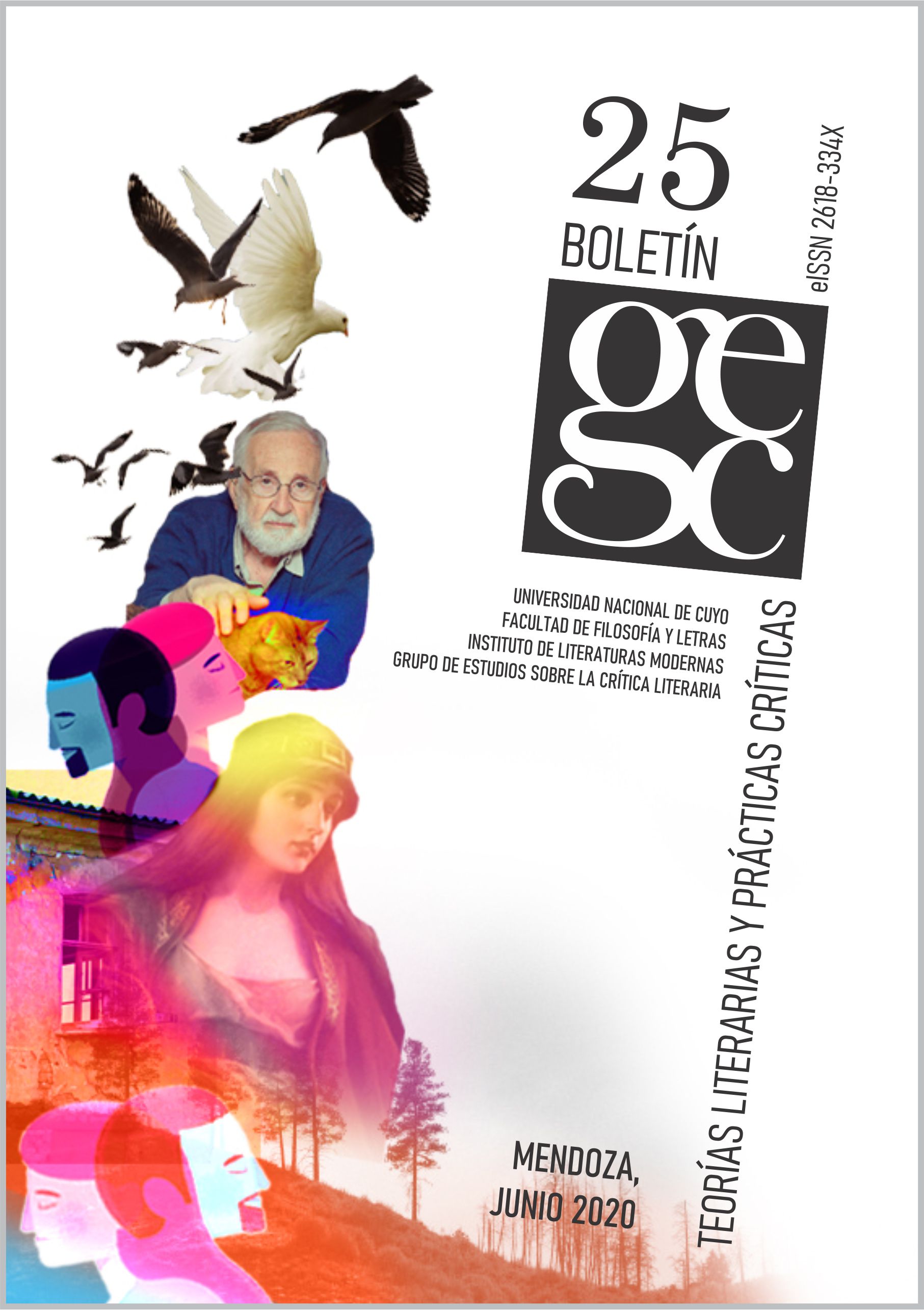Journeys to the Beyond: mutant identity and fictionalization in the work of Mario Bellatin
Keywords:
symbolism, myth, migration, Latin American narrative, Mario BellatinAbstract
In the frame of a symbolic reading, this work seeks to highlight the awareness of the fictional nature of any identity in the narrative of Mario Bellatin, particularly in the texts Jacob the mutant, The uruguayan book of the dead and The transparent bird’s gaze. An investigation is made of the symbolic constellations (Durand, 1993, 2012; Garagalza, 1990) that allow the maximum use that Bellatin makes of the artificial and malleable character and, therefore, mutant of the identity, privileging diverse manifestations of the myth of the initiatory journey, above all, those carried out both by the terrestrial migrant and by the ultra-terrestrial. With regard to the latter, a homology between the entrance to the Beyond or the Mundus Imaginalis and the processes of fictionalization is proposed.
References
Anónimo (1996). Bhagavad-Gita o el Canto del Bienaventurado. Madrid: Edaf.
Anónimo (2003). El libro tibetano de los muertos. Buenos Aires: Kier.
Anónimo (2009). El libro de los muertos. Madrid: Tecnos.
Banducco, Gabriel y Mario Bellatin (2017). "La obra literaria de Mario Bellatin". Youtube.com, 30 jun. https://www.youtube.com/watch?v=Ep0omD3oOuE
Barrón, Daniel y Mario Bellatin (2013). "Mario Bellatin en Arte afuera". RompevientoTV. 8/ 1/ 2013 (Segunda parte)". Youtube.com, 8 ene. https://www.youtube.com/watch?v=9KqB9zgap1g
Bellatin, Mario (2013). Obra reunida. Madrid: Alfaguara.
Bellatin, Mario (2014). Obra reunida 2. Madrid: Alfaguara.
Bellatin, Mario y Alicia Ortega (2014). "Mario Bellatin: ‘Me siento escritor, cuando voy desescribiendo’". Youtube.com, 15 jul. https://www.youtube.com/watch?v=_JxYmb1Rc0u
Beltrán, Rosa; Lavín, Mónica y Mario Bellatin (2017). "Contraseñas. Mario Bellatin". Youtube.com, 4 ago. https://www.youtube.com/watch?v=zYdyMsx H6XQ&t=12s
Castro Merrifield, Francisco (2012). "Gilbert Durand y el método arquetipológico". Acta sociológica, n. 57. 51-64.
Corbin, Henry (1996). Cuerpo espiritual y tierra celeste. Del Irán mazdeísta al Irán chiíta. Madrid: Siruela.
D’Artigues, Katia y Mario Bellatin (2017). "Tus preguntas a Mario Bellatin". Youtube.com, 3 ago. https://www.youtube.com/watch?v=4CfDga_jRZQ&t=753s
Dougherty, Dru (1992). "La mitificación de Valle-Inclán". Joan Ramón Resina (coord.) Mythopoesis, literatura, totalidad, ideología: ofrecido a Joseph J. Duggan. Madrid: Anthropos. 201-212.
Durand, Gilbert (1993). De la mitocrítica al mitoanálisis. Figuras míticas y aspectos de la obra. Barcelona: Anthropos;Universidad Autónoma Metropolitana-Iztapalapa.
Durand, Gilbert (2012). "La mitocrítica paso a paso". Acta sociológica, n. 57. 105-118.
Garagalza, Luis (1990). La interpretación de los símbolos. Hermenéutica y lenguaje en la filosofía actual. Barcelona: Anthropos.
Hillman, James (2004). El sueño y el inframundo. Barcelona: Paidós.
Jung, Carl Gustav (2003). "El Libro Tibetano de los Muertos. Comentario psicológico". Anónimo. El libro tibetano de los muertos. Buenos Aires: Kier. 31-49.
McDughann, Sean (ed.) (2006). Mitos y leyendas del mar. El azul infinito. Barcelona: Océano.
Resina, Joan Ramón (ed.) (1992). Mythopoesis: Literatura, totalidad, ideología. Barcelona: Anthropos.
Vert, Lluisa (2018). "La ‘Shekinah’ o la Presencia divina". Arsgravis.com. https://www.arsgravis.com/la-shekinah-o-la-presencia-divina/
von Eersel, Patrice y Catherine Maillard (eds.) (2004). Mis antepasados me duelen. Psicogenealogía y constelaciones familiares. Barcelona: Obelisco.
Downloads
Published
How to Cite
Issue
Section
License
Aquellos autores/as que tengan publicaciones en esta revista, aceptan los términos siguientes:
- Los autores/as conservarán sus derechos de autor y garantizarán a la revista el derecho de primera publicación de su obra, el cual estará simultáneamente sujeto a la Licencia de reconocimiento de Creative Commons que permite a terceros compartir la obra siempre que no se use para fines comerciales, siempre que se indique su autor y su primera publicación en esta revista, y siempre que se mencionen la existencia y las especificaciones de esta licencia de uso.
- Los autores/as podrán adoptar otros acuerdos de licencia no exclusiva de distribución de la versión de la obra publicada (p. ej.: depositarla en un archivo telemático institucional o publicarla en un volumen monográfico) siempre que se indique la publicación inicial en esta revista y se cumplan las otras condiciones mencionadas arriba.
- Se permite y recomienda a los autores/as difundir su obra a través de Internet (p. ej.: en archivos telemáticos institucionales o en su página web) antes y durante el proceso de envío, lo cual puede producir intercambios interesantes y aumentar las citas de la obra publicada. (Véase El efecto del acceso abierto).















